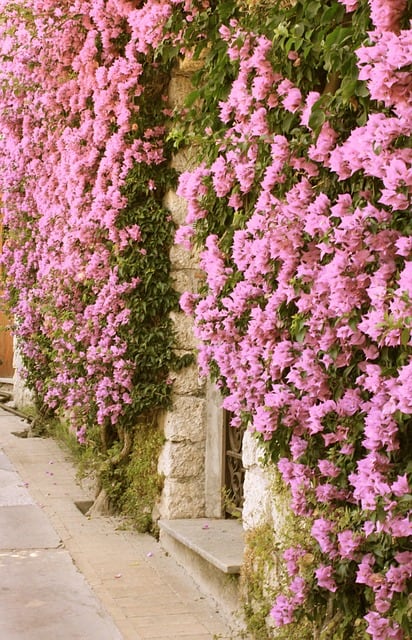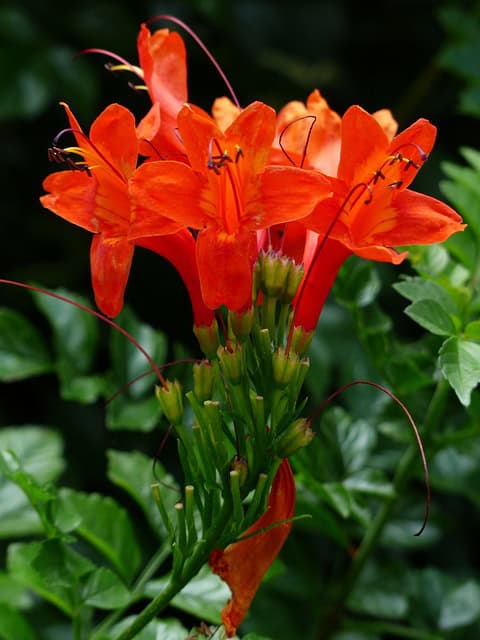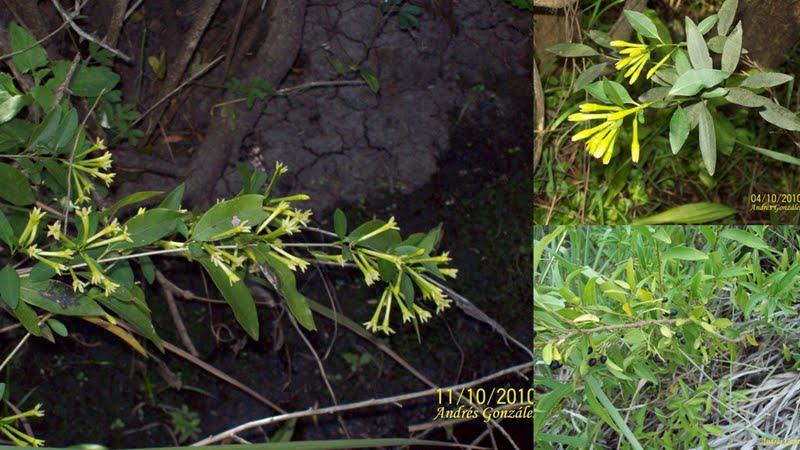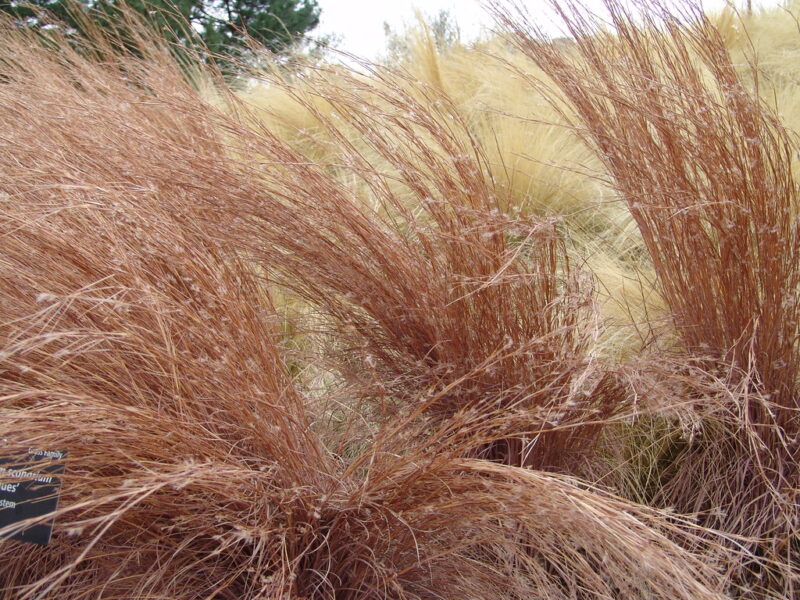Deserts are often perceived as barren landscapes, devoid of life and color. However, these arid regions are home to a myriad of resilient plants that not only survive but thrive in harsh conditions. One of the most striking attributes of many desert plants is their remarkable flowers. This blog post will explore a diverse selection of flowering desert plants, highlighting their unique characteristics and adaptations that allow them to flourish in some of the most challenging environments on Earth.
Agave (Agave Spp.)

The Agave plant is a symbol of the desert, known for its rosette-shaped foliage and striking flower spikes. Typically characterized by large, fleshy leaves often tipped with spines, Agaves can survive with minimal water due to their ability to store moisture. One of the most fascinating aspects of agave is its flowering behavior; many species bloom only once in their lifetime. When they do flower, they send up a tall stalk many feet high, adorned with clusters of yellow or white flowers. This spectacular yet brief explosion of color draws pollinators and is crucial for the plant’s reproduction before it completes its life cycle and dies.
Aloe (Aloe Spp.)
Aloe plants, much like agaves, belong to the succulent category but are famous for their gel-filled leaves. Found in various desert regions, these plants showcase tall flower spikes that produce tubular flowers, typically in shades of orange, red, or yellow. Aloes are particularly important not just for their ornamental value but also for medicinal uses; their gel has soothing properties ideal for skin ailments. The flowering period usually coincides with the dry season, making these plants vital sources of nectar for bees and hummingbirds when other plants may be dormant.
Bougainvillea (Bougainvillea Spp.)

With their vibrant and flamboyant bracts, bougainvilleas are the life of desert gardens. While technically not flowers, these colorful bracts surround the tiny, white flowers, creating a vivid display against the backdrop of dry, barren landscapes. These climbing plants are drought resistant and thrive in hot climates, making them a popular choice for arid regions. Their ability to bloom profusely and maintain color even under extreme heat is a testament to their adaptability. Bougainvillea also attracts a variety of pollinators, creating a lively environment where they grow.
California Poppy (Eschscholzia Californica)

The California poppy, a wildflower native to the western United States, brightens up the desert with its vibrant orange flowers. These perennial plants not only add beauty to the landscape but also serve as an essential source of nectar for insects. The California poppy is known for its ability to close its flowers during hot afternoon hours, conserving moisture and protecting itself from the intense sun. This clever adaptation enables it to survive in the harsh desert environment, making it a striking symbol of resilience and beauty.
Desert Orchid (Chitalpa Hybrid)

The Desert Orchid is a hybrid plant that thrives in hot, dry environments and is acclaimed for its unique clusters of trumpet-shaped flowers. The blossoms can appear in various colors, including white, pink, and purple, which bloom in late spring to summer, providing a much-needed splash of color during the hottest months. This plant is not only attractive but also drought-tolerant and adaptable, making it suitable for desert gardens. Its long flowering season brings butterflies and hummingbirds, illustrating the interdependence of desert flora and fauna.
Creosote Bush (Larrea Tridentata)

The creosote bush is the quintessential desert shrub, often associated with the southwestern US. Known for its small, yellow flowers and distinct aroma, this plant plays a crucial role in desert ecosystems. Its flowers bloom primarily in the summer, attracting pollinators and other wildlife. The creosote bush has adapted to the dry environment through its waxy leaves, minimizing water loss. Moreover, its ability to survive in extreme conditions makes it a pivotal species for stabilizing sandy soils and providing habitat for various desert animals.
Pink Crape Myrtle (Lagerstroemia Indica)

The Pink Crape Myrtle is a remarkable ornamental plant that adapts beautifully to the arid climate. Known for its stunning pink flowers that bloom throughout the summer, these plants provide vibrant scenery against desert landscapes. Crape myrtles are not only drought-resistant but also resilient to heat and disease, making them incredibly suitable for desert gardening. Their long flowering season and ability to shine in heat make them popular among gardeners seeking color and beauty in arid settings.
Desert Marigold (Baileya Multiradiata)

Brilliantly displaying bright yellow flowers, the desert marigold is a perennial that thrives in sandy soils of the desert southwest. Its blooms typically occur from late winter through spring, adding bursts of sunshine to the often-dry landscape. The desert marigold is another drought-resistant species; it has adapted by developing deep taproots to access moisture. Beyond its beauty, this plant plays an essential role in desert ecosystems, attracting pollinators and helping to sustain other wildlife.
Orange Esperanza (Tecoma Hybrid)

Orange Esperanza is an eye-catching shrub heralded for its brilliant orange flowers that bloom in profusion, creating a striking contrast with its lush green foliage. This flowering plant attracts hummingbirds and butterflies, making it an excellent choice for pollinator gardens. It is notably drought-tolerant and thrives in full sun, which aligns perfectly with the desert climate. Its extended blooming period provides vibrant color during the summer months when many other plants are either wilting or dormant.
Firecracker Bush (Bouvardia Hybrid)

The Estrellita Little Star® Firecracker Bush is a compact shrub with clusters of vibrant red, tubular flowers resembling firecrackers. These flowers attract hummingbirds and butterflies, creating a lively display in desert gardens. This plant is particularly valued for its heat tolerance and ability to thrive even in poor soils, making it an incredible choice for arid environments. Its petite size is perfect for small gardens or container planting, providing bright blooms all summer long.
Jessamine (Cestrum Corymbosum)

Jessamine stands out with its clusters of bright flowers that emit a sweet fragrance, inviting numerous pollinators. This plant adapts well to both full sun and partial shade, making it versatile for varied garden settings in desert landscapes. It is particularly appreciated for its prolonged blooming season, which lasts from spring until fall. The evergreen nature of this plant provides year-round greenery, while the vibrant blooms offer visual appeal during warmer months.
Joshua Tree (Yucca Brevifolia)
The iconic Joshua Tree is more than a striking feature of the Mojave Desert; it is a true testament to the resilience of desert plants. Recognized by its spiky leaves and towering form, the Joshua Tree produces large clusters of creamy white flowers that bloom in the spring. These plants can survive extreme temperature fluctuations and prolonged droughts due to their unique water-conserving adaptations. The flowering spike of the Joshua Tree not only serves as a mesmerizing natural spectacle but also attracts numerous pollinators, reinforcing its vital role in the desert ecosystem.
Lantana (Lantana Spp.)

Lantanas are known for their vibrant clusters of small flowers that change color as they mature, offering a dazzling display in desert gardens. These hardy plants thrive in heat and poor soil, making them ideal for arid landscapes. Lantanas are excellent choices for attracting butterflies and bees, contributing to the pollinator population. Their ability to bloom continuously makes them a favorite among gardeners seeking sustainable color in tough climates while requiring minimal maintenance.
Little Bluestem (Schizachyrium Scoparium)

While technically a grass, Little Bluestem produces feathery flower spikes that lend a soft texture and gentle movement to the desert landscape. This native grass thrives in dry, open areas and showcases vibrant blue-green colors throughout the growing season, turning golden in the fall. Its flowers provide habitat for various insects and birds, making it an essential component of desert ecosystems. Little Bluestem is drought-resistant and helps stabilize soil, playing a significant role in desert plant communities.
Mesquite (Prosopis Spp.)

Mesquite trees are an iconic feature of many desert landscapes, noted for their twisted trunks and lush foliage. The trees produce fragrant yellow flowers during the summer, which are not only beautiful but also feed a variety of wildlife. Mesquite trees demonstrate remarkable adaptability, such as their extensive root systems that access deep groundwater and their shade-inducing canopies that benefit understory plants. This multipurpose tree provides food, habitat, and shade in arid regions.
Mexican Bird of Paradise (Caesalpinia Pulcherrima)

This stunning shrub is celebrated for its resplendent, flamboyant red and yellow flowers that bloom in clusters, resembling birds in flight. The Mexican Bird of Paradise is a rapid grower that thrives in full sun and is highly drought-resistant. Its vibrant blooms are a favorite among hummingbirds and butterflies, promoting biodiversity in desert gardens. Additionally, the plant’s finely textured foliage adds an attractive backdrop, enhancing the overall aesthetics of any garden.
Ocotillo (Fouquieria Splendens)

The ocotillo is a unique desert plant, often mistaken for cactus due to its tall, spindly stems. When conditions are right—typically after rain—the stems burst into vibrant red flowers that attract a variety of pollinators including hummingbirds. Its adaptation to the arid environment is remarkable; ocotillos can leaf out quickly after rainfall and then lose their leaves to conserve water during dry spells. This adaptability aids in the survival of the plant while providing essential resources for wildlife in the desert.
Oleander (Nerium Oleander)

Oleander is commonly found in warm, dry climates and is well-known for its resilient nature and long-lasting blooms. This flowering shrub produces large clusters of flowers in colors ranging from white to pink to red. While it is often planted for its aesthetic appeal, it’s important to note that oleander is toxic if ingested. Despite its toxicity, its adaptation to drought conditions and aesthetic value make it a popular choice for many desert gardens. Oleander is also quite tolerant of poor soil conditions and requires minimal maintenance, thriving in harsh environments.
Organ Pipe Cactus (Stenocereus Thurberi)

The Organ Pipe Cactus is a stunning sight in the desert, typically characterized by its tall, branching structure that can resemble the pipes of a musical instrument. This cactus blooms with large, white, tubular flowers that only open at night, relying on nocturnal pollinators. The unique flowering habit and the spectacular visual display during the night make it a captivating specimen. Organ Pipe Cactus is also important ecologically, providing shelter and food for various desert creatures.
Pencil Cactus (Euphorbia Tirucalli)

The Pencil Cactus, known for its slender, green stems and unique appearance, produces small oval flowers that can be inconspicuous compared to the plant itself. However, its bright yellow blooms stand out dramatically against its thin green stems. This euphorbia is remarkably drought-resistant and can thrive in poor soil, making it an excellent addition to xeriscapes. Its milky sap can be toxic, so caution is advisable when handling this plant, but its striking shape and resilience make it a stunning choice for arid environments.
Pink Muhly Grass (Muhlenbergia Capillaris)

Pink Muhly Grass adds a luscious touch of color to the desert landscape, especially when it blooms in late summer and fall. The delicate pinkish plumes sway gracefully in the wind, creating an ethereal effect. This native grass is highly adaptable to drought conditions and poor soils, making it a staple in many desert gardens. Beyond its beauty, Pink Muhly Grass also provides habitat for small birds and insects, contributing to the overall biodiversity of the desert ecosystem.
Prickly Pear Cactus (Opuntia Spp.)
Prickly Pear Cactus is widely recognized for its colorful, flat pads and vibrant flowers, which bloom in shades of yellow, red, and pink. This cactus family is crucial for its edible fruit, known as “tunas,” and pads, which are used in various culinary applications. The bright, showy flowers attract pollinators, reinforcing the ecological importance of this cactus in desert environments. Prickly pear thrives in poor soil and can withstand dry conditions, making it an excellent option for sustainable gardening in arid regions.
Rock Purslane (Calandrinia Grandiflora Syn. Cistanthe Grandiflora)

Rock Purslane is a stunning perennial that thrives in rocky, arid soils, showcasing vibrant pink flowers that bloom in profusion in the spring. This plant is notable for its ability to flower even during periods of drought, making it a resilient choice for desert landscaping. Its low-growing habit and fleshy leaves permit it to conserve water while adding a burst of color to the landscape. Rock Purslane is a testament to the adaptability of desert flora, turning harsh conditions into a vibrant display of life.
Texas Sage (Leucophyllum Frutescens)

Texas Sage is beloved for its silvery foliage and beautiful purple flowers that bloom after rain, transforming the desert landscape with color and life. This shrub is exceptionally drought-tolerant, thriving in dry, hot climates. Its flowers attract various pollinators, including bees and butterflies, contributing to the eco-friendly garden design. Texas Sage not only offers aesthetic value but also plays an important role in desert ecosystems, providing cover and sustenance for wildlife.
Yucca (Yucca Spp.)

Yucca plants are renowned for their spiky leaves and towering flower stalks adorned with large, white bell-shaped flowers. These plants are drought-resistant and can adapt to various soil types, often thriving in challenging environments. The blooming period is typically in the spring and summer, providing a striking visual and attracting pollinators. Yucca serves as a vital resource in the desert ecosystem, providing food and shelter for birds, insects, and other wildlife while maintaining its rugged beauty.








